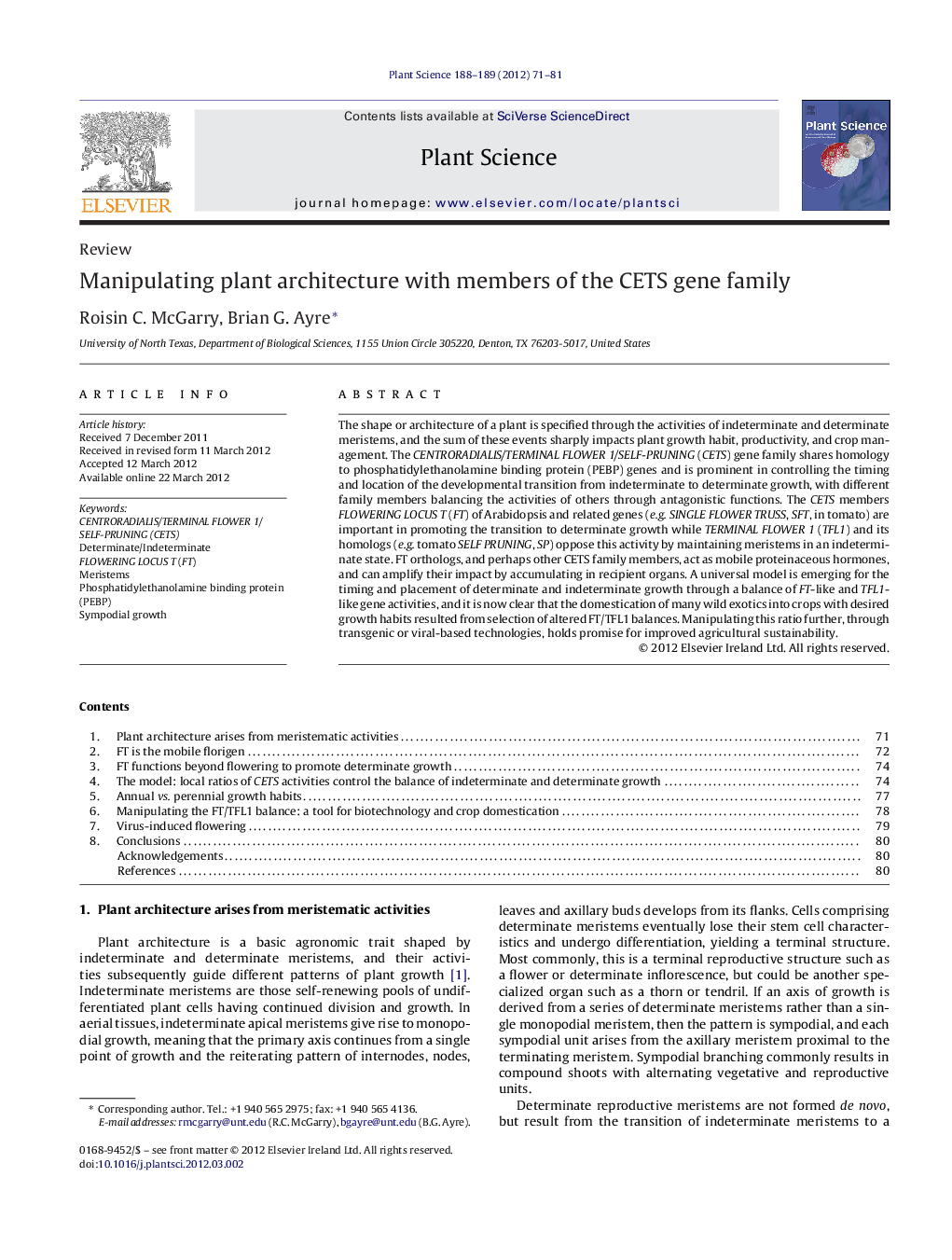| Article ID | Journal | Published Year | Pages | File Type |
|---|---|---|---|---|
| 2017371 | Plant Science | 2012 | 11 Pages |
The shape or architecture of a plant is specified through the activities of indeterminate and determinate meristems, and the sum of these events sharply impacts plant growth habit, productivity, and crop management. The CENTRORADIALIS/TERMINAL FLOWER 1/SELF-PRUNING (CETS) gene family shares homology to phosphatidylethanolamine binding protein (PEBP) genes and is prominent in controlling the timing and location of the developmental transition from indeterminate to determinate growth, with different family members balancing the activities of others through antagonistic functions. The CETS members FLOWERING LOCUS T (FT) of Arabidopsis and related genes (e.g. SINGLE FLOWER TRUSS, SFT, in tomato) are important in promoting the transition to determinate growth while TERMINAL FLOWER 1 (TFL1) and its homologs (e.g. tomato SELF PRUNING, SP) oppose this activity by maintaining meristems in an indeterminate state. FT orthologs, and perhaps other CETS family members, act as mobile proteinaceous hormones, and can amplify their impact by accumulating in recipient organs. A universal model is emerging for the timing and placement of determinate and indeterminate growth through a balance of FT-like and TFL1-like gene activities, and it is now clear that the domestication of many wild exotics into crops with desired growth habits resulted from selection of altered FT/TFL1 balances. Manipulating this ratio further, through transgenic or viral-based technologies, holds promise for improved agricultural sustainability.
► FT is a long-distance signal that promotes determinate growth at meristems. ► FT function is opposed by TFL1 which maintains meristems in an indeterminate state. ► The FT/TFL1 balance specifies determinate or indeterminate growth in local tissues. ► Plants with favorable FT/TFL1 ratios experienced selection during domestication. ► Further manipulation of the FT/TFL1 balance holds promise for biotechnology.
